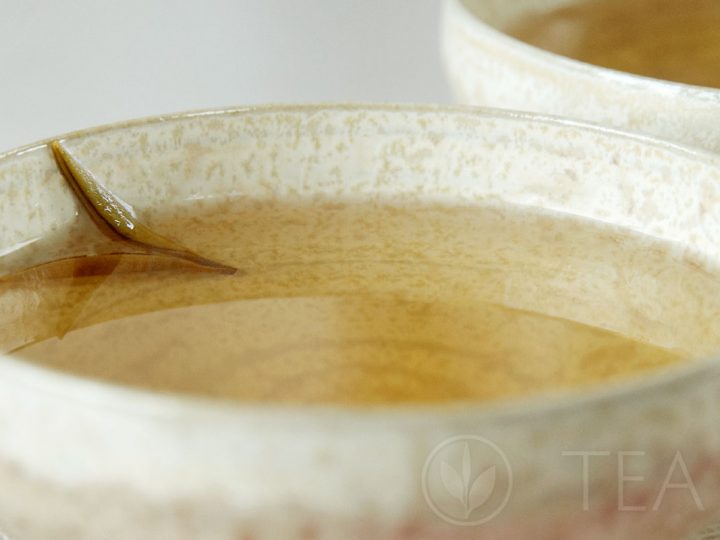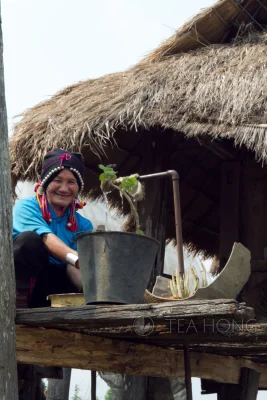
A woman of an indigenous tribe — Tai — smiled to us as we walked by her simple home on the way to a tea forest. They are the main frontline workforce in tea picking and initial processing for wild tree maocha
“This is reserved for ourselves”
If you ever travel to the tea mountains in Yunnan where Pu’er tea is produced, you may very likely see hardworking tea pickers, basket weavers, bamboo cutters, tea processors, tea transporters etc from various indigenous tribes. Most of them play multiple roles in the early stages of Pu’er making. Most live in very simple houses. However, it is likely too that you would not see them drinking shu Pu’er (aka post-fermented Pu’er) or bing cha (compressed Pu’er). They drink maocha — the raw material that make bing cha and shu cha. You mostly can see a sieve or two with drying tealeaves in it. “This is reserved for ourselves,” a young woman answered me in Mandarin, as her mother did not speak anything else other than one of the many native languages, Tai.
The tea before final processing
Maocha — crude tea, i.e. tea before the final processing — is a jargon that is basically used in the production of all tea categories. In the category of Pu’er, however, it takes on a more significant meaning.
The processes involved in compression to make cha bings and those that make shu cha result in significant changes to the chemistry of the leaves, and therefore, deliver an end product which taste profile is quite different from this “crude” state. This is not the same as in say, Phoenix oolong, or Longjing green tea. The maochas of these teas basically are almost the same as the final product.
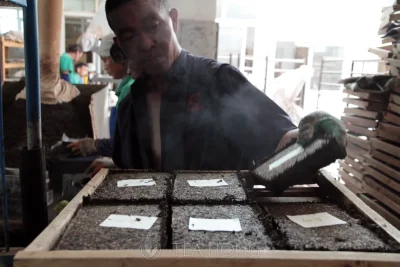
Tea compression takes the leaves through a process of steaming, high pressure compression and then baking.
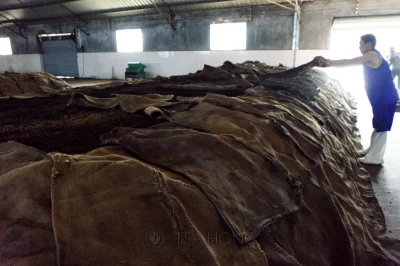
Post-fermentation changes dramatically the chemistry in the tealeaves to give a dark tea
A white tea?
Pu’er maochas, to me, are like another category of tea. To me they are more like white tea in conceptual term, except for the fact that there have been less shaded-withering before pan-roasting. But there is sun-withering.
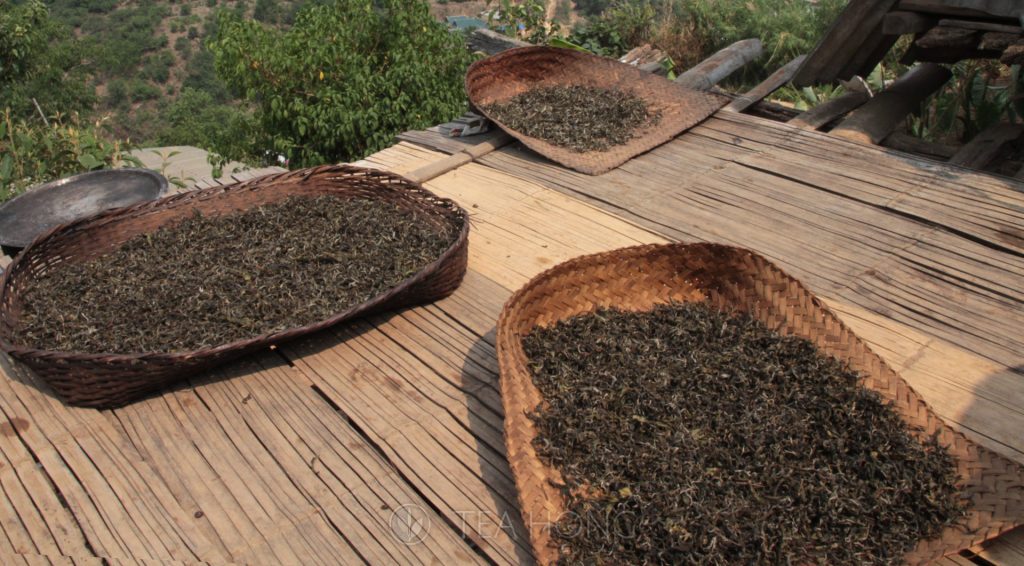
Shallow bamboo baskets with maocha on the roof of a tea picker’s home. “This is reserved for personal use,” said the daughter. The leaves will be withered and dried under the sun for as long as it takes and then stored away. This is not unlike the traditional preservation for some other plant food. This is the rawest form of tea that I know.
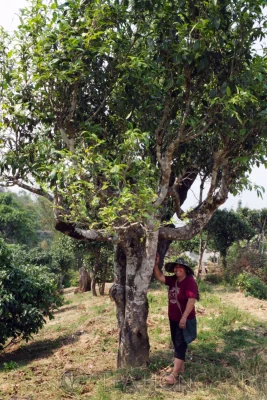
My guide for the day, Da Ba, post for me under an old wild tea tree in Pasha, on a slope on the back of her house, less than 5 minutes away on foot. An indigenous Yi tribeswoman, she is a team leader in tea picking for this area.
Because of the uniqueness of the very tea trees that yield these leaves, and the “rawness” of the simplicity of the processes that have been done onto them, there is a certain wildness in these teas that is not found in most other categories. Maochas are “raw” in this respect.
It is exactly because of this rawness that a Pu’er maocha holds more of the original beneficial ingredients of the tea leaf. Due to the minimal firing done onto the final product, like genuine white teas, it is also the category with the highest humidifying TCM character. Therefore an appropriate option for when the body has a dryness imbalance.
Diversity brings different tastes
The size of Yunnan is about 110% that of Germany. This vast piece of land is itself naturally divided into regions by huge mountain ranges. In fact, over 90% of the land is mountains, generally taller ones (over 5000m) in the north. The average elevation is around 2000m, with lower, flatter land in the south near the Vietnam border, at around 75m. Within this diverse landscape comes differences in the terroir and in the genetics of wild growing tea trees.
Traditionally, people have delineated this difference by the name of the origin. Hence names like Pasha, Bai Hua Shu, Bing Dao etc. We follow this same practice.
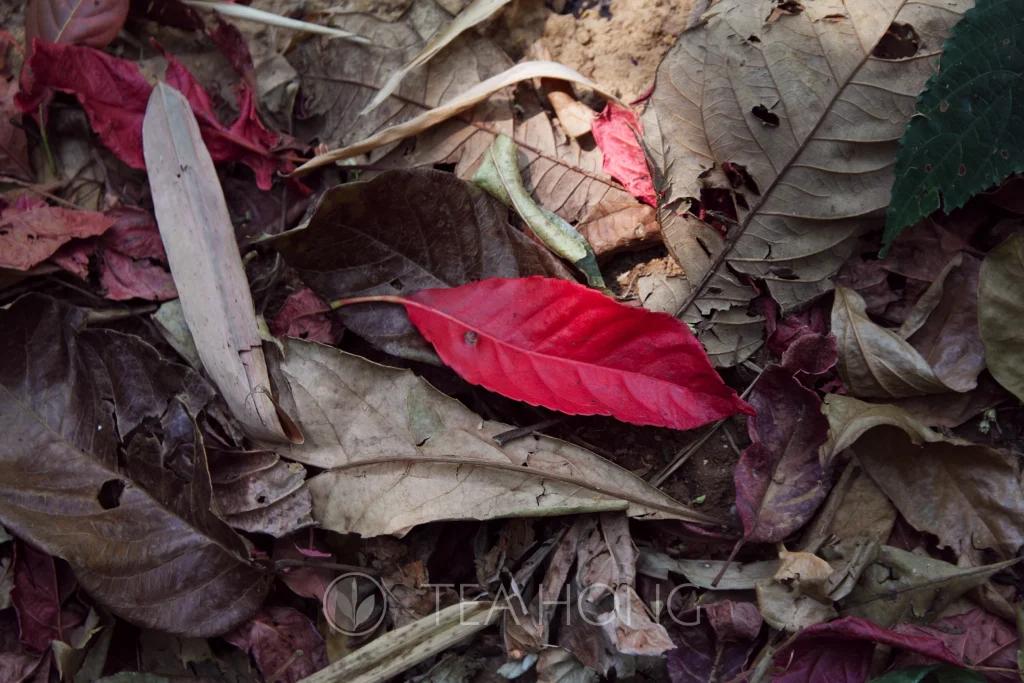
A snapshot of the floor of the tea tree forest, showing fallen leaves from a huge diversity of plants, with different shapes, colours, and sizes. Diversity is found also in the varieties of wild tea trees visible throughout the region. I have made some pictures on the topic and will present them in a separate post.
Comments (0)
Leave a reply
You must be logged in to post a comment.







